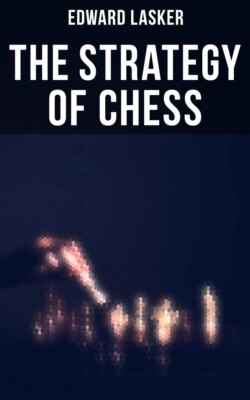Читать книгу The Strategy of Chess - Edward Lasker - Страница 4
TRANSLATOR’S PREFACE
ОглавлениеAs the first edition of Edward Lasker’s Chess Strategy was exhausted within a comparatively short time of its appearance, the author set himself the task of altering and improving the work to such an extent that it became to all intents and purposes a new book. I had the privilege of co-operating with him to a slight degree on that second edition, and was in consequence able to appreciate the tremendous amount of work he voluntarily took upon himself to do ; I say voluntarily, because his publishers, anxious to supply the strong demand for the book, wished to reprint it as it stood.
A little later I undertook to translate this second edition into English. Only a few months had elapsed, the tournaments at Petrograd, Chester, and Mannheim had taken place, several new discoveries had been made, and it is the greatest testimony to Edward Lasker’s indefatigable devotion to the Art of Chess that I am able to say that this is not a translation of the second edition, but of what is practically a new book. It contains a new preface, a chapter for beginners, a new introduction, new variations. Furthermore, a large number of new games have taken the place of old ones.
I have no doubt that any chess player who will take the trouble to study Chess Strategy will spend many a pleasurable hour. Incidentally new vistas will be opened to him, and his playing strength increased to a surprising degree.
The author says in his preface that he appeals to the intelligence and not the memory of his readers. In my opinion, too, the student should above all try to improve his judgment of position.
Than the playing over of games contested by experts I can hardly imagine a greater or purer form of enjoyment. Yet I must at the outset sound a note of warning against its being done superficially, and with a feverish expectation of something happening. Every move or combination of moves should be carefully weighed, and the student should draw his own conclusions and compare them with what actually happens in the game under examination.
This applies particularly to some of the critical positions set out in diagrams in the course of the exposition of the several games.
The reader would derive the greatest possible benefit from a prolonged study of such positions before seeking to know how the games proceed. After having formed his own opinion about the merits of a particular position, he should compare the result with the sequel in the game in question, and thus find out where his judgment has been at fault.
The deeper study of the theory of the openings is of course a necessity to the student who wishes to become an expert, but the development of his judgment must precede it. To him Griffith & White’s admirable book, Modern Chess Openings, will be a perfect mine of information. There are thousands of variations, and in most of them the actual game in which they were first tried by masters is named, thus adding to the interest and value of the work.
I must not omit to mention the invaluable help afforded me by my friend Mr. John Hart, to whom my warmest thanks are due.
JULIUS DU MONT.
